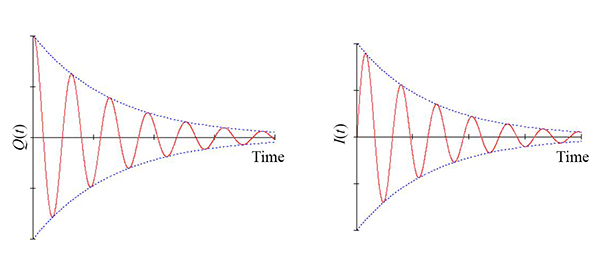Harmonic Oscillators with Damping
Problem 1
Using a force of 4 newtons, a damped harmonic oscillator is displaced from equilibrium by 0.2 meters. At t = 0 it is released from rest. The resultant displacement of the oscillator, from the equilibrium position, as a function of time, is shown in the figure below. Estimate, as well as you can using the given information:
- The mass of the oscillator.
- The quality factor of the oscillator.

› View/Hide Answer
Problem 2

The circuit shown above consists of a capacitor (\(C\)), an inductor (\(L\)) and a resistor (\(R\)). Initially the switch is open and the charge (\(Q\)) on the capacitor is \(Q(t \leq 0) =Q_0\). At \(t = 0\), the switch is closed.
- For what values of \(R\), the initial sign of \(Q(t)\) will be reversed at some later times?
- Assuming that the value of \(R\) satisfies the condition in (1), find \(Q(t)\) and the current \(I(t)\) in terms of \(Q_0\), \(R\), \(L\) and \(C\). Draw qualitative sketches of both \(Q(t)\) and \(I(t)\). (Make sure to indicate the behaviour around \(t=0\)).
- If it takes 10 cycles for the energy in the circuit to decrease to \(1/e\) times its initial value, find the value of the resistance \(R\) in terms of \(L\) and \(C\).
› View/Hide Answers

